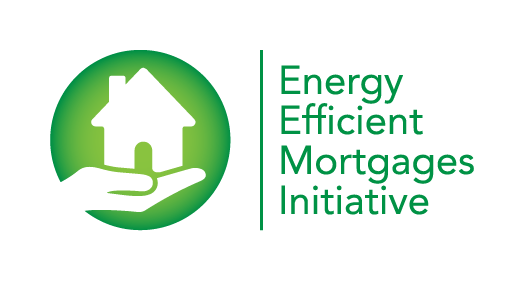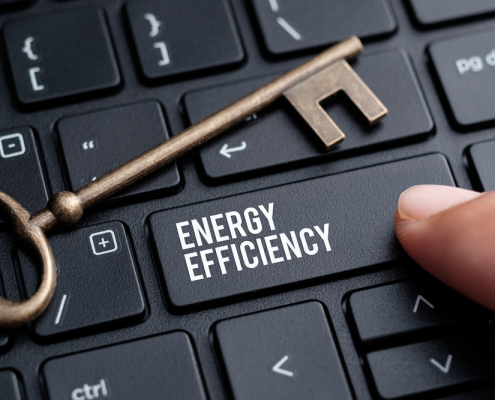
Energy Efficient Mortgages Events – 24 & 25 April 2019 – Riga

The EEM Initiative events were preceded by a welcome speech (link to video here) from Mr. Dombrovskis, Vice-President of the European Commission, in which he highlighted the need to mobilise finance for sustainable investments and sustainable growth. Significantly, he welcomed the work done by the EMF-ECBC in leading the EEM Initiative and the tangible achievements in developing a market for energy efficient mortgages which is being recognised by policymakers.

The proceedings kicked off in the morning with a meeting of the EEM Initiative Pilot Scheme lending institutions, which offered a platform of exchange to encourage discussions and brainstorming about coordinated market implementation. The purpose of the roundtable was to build a community to share market insights and best practices which are crucial in understanding market appetite and readiness for energy efficient mortgages on both the demand and supply sides, what an energy efficient mortgage product should look like and how market development can be achieved.
The European Investment Bank attended the meeting and presented a comprehensive set of support tools for energy efficiency lending. As the EU’s house bank, the EIB is the world’s largest multilateral financier of climate action projects, with 30% of its lending going towards combating climate change in 2018. Overall, the EIB’s energy efficiency lending has increased threefold since 2012, and in 2016, 74% of the €3.62 billion total energy efficiency lending was allocated to buildings.
A key EIB funding line, ELENA (European Local Energy Assistance) is now open to private sector organisations, including banks. Since 2009, ELENA has provided €154 million of grants for efficiency, renewables and transport projects, triggering an additional €5.4 billion of investment. ELENA grants can be used to finance costs related to feasibility and market studies, programme structuring, business plans, energy audits and financial structuring. These can address important market barriers to the wide scale role out energy efficient mortgages (e.g. additional transaction costs of EEMs, such as energy auditing and certification).
Beyond ELENA, the EIB has indicated its readiness to ready to engage with EEM pilot lending institutions and explore how to best leverage and exploit synergies between EEMI and the EIB energy lending policy, especially with regard to the practical implementation of both initiatives.

Participating lending institutions widely agreed that the business case for EEMs will need to be articulated more forcefully. The fragmented and heterogenous nature of the EEM value chain and the immaturity of the EEM market generate relatively high costs for EEM origination, due diligence, underwriting, documentations and other “transaction costs” which are making the entry into this business unattractive for many lending institutions. These costs seem to be particularly relevant in the current low interest rate environment. The efficient blending of EEMs and public support schemes at both national and local level could be particularly effective, especially in markets where investment in energy efficiency and the residential real estate sector is currently at negligible levels.
Clarity over the energy performance metrics and the recording/disclosing of energy data were other important discussion points. The EEMI is at turning point as it moves on to the practical implementation phase and the translation of the high-level principles and mission statements into the operational aspects of day-to-day business. Market hubs are in the process of benchmarking the local EPC bands and nZEB levels against the common EEM Initiative definition. At the same time, a consultation is being conducted on the common data reporting and transparency template which will facilitate the identification of EEM Initiative compliant assets.
The roundtable concluded that further exchange will be valuable to provide a comprehensive understanding of how market development might occur. The list of market obstacles and enablers identified during discussions provide a particularly valuable mapping of those areas where institutional support and coordination might prove most beneficial and should therefore be prioritised.
Sustainable Finance Panels
The afternoon session featured an inspiring line-up of three panels and keynotes. Mario Nava, Director at the European Commission’s Financial Services Directorate (DG FISMA) opened the Sustainable Finance Workshop with an insightful speech (link to video here) highlighting the commitment of the EU to mainstream sustainable finance in parallel with the completion of the Capital Market Union. In this context, he recalled the commitment of Europe to implement the Paris Agreement. In order to achieve this commitment, it is essential to join the forces of public and private investment said he underlined.

He also highlighted the significant work carried out during the last couple of years and the speed at which both policy makers and technical experts are working in the area of sustainable finance. Making Europe’s economy more sustainable and contributing to sustainable development globally means undertaking huge investments to improve, innovate, and become more efficient and competitive. This is an immense opportunity for both public and private sectors, and transparency is very important.
Finally, he reiterated the EC’s strong support of the EEM Initiative, as illustrated by the letter issued by the Energy and Financial Services Directorates of the EU Commission (see Annex). Both the EEM Initiative and the EU’s sustainable Finance agenda share similar general policy and environmental goals. He also stressed three other reasons to support the Initiative. First, the remarkable size of the market share achieved via participating lending institutions. Second, the scope of action and number of critical aspects that are being addressed, such as market transparency, awareness raising and systematic collection of data. Finally, he highlighted that EEM Initiative has the potential of scale up beyond Europe.
Kamila Paquel, Project Adviser at the Executive Agency of the EU Commission, underlined the pioneering work of the 45 pilot lending institutions (link to video here). She recognised the challenges they are facing, but also how their efforts are contributing to the mainstreaming of energy efficient mortgages. She highlighted the role of the Initiative in turning policy ambitions into market reality.

The keynote addresses were followed by panel discussions in which institutional (link to video here) and market perspectives (link to video here and here) were discussed. Different experts presented the challenges and opportunities faced by the industry as well as by regulators. DG Energy Policy Officer Diana Barglazan recalled the policy context, describing the EU’s energy savings targets and the potential of the EEM Initiative to deliver private financing to support the EU in meeting these targets. National market hub coordinators for their part shared the progress made in their respective jurisdictions, with a focus on products, data and partnerships, and gave a sense of what the next steps might be. Panellists also debated the importance of data and how to integrate energy efficiency into lending institutions’ processes and decision-making, and the business case for doing so.
Energy Efficient Mortgages Advisory Council Meeting
The EEMI Advisory Council met the following day morning to take stock of the outcome of the EEMI Pilot Scheme Lending Institutions’ meeting and discuss potential policy support actions at local, national and European levels. The Advisory Council of the EEM Initiative consists of 12 local, European and international organisations and/or authorties and plays a key role in promoting and facilitating dialogue between policymakers and stakeholders from the banking, property and energy sectors. The Advisory Council is also considered as an important source of guidance to ensure coherence between the Initiative actions and the political priorities of the international community.

The group reflected on the latest achievements of the EEMI, including the release of the common definition, the setting up of national market hubs and the work being carried out to develop a common data template to facilitating accessibility, disclosure, understanding and comparability of building performance and financial data.
The idea of an Energy Efficiency Mortgage Label was presented which will be developed from the above common market transparency template. The primary objective of the Label will be to reassure markets and regulators that mortgages comply with the EEM definition and guidelines as well as demonstrate a responsible commitment to transparency and common reporting on quantitative and qualitative performance indicators. A Label Committee will ensure oversight and ongoing alignment of the EEM definition with high quality standards and market best practice at EU and national level. It will also be responsible for improving regulatory and market recognition of EEM as a new asset class. By improving the access to relevant and transparent mortgage information for investors, regulators and other market participants via a consistent reporting template, the Label can become a powerful communication tool to further help the securitisation and issuance of green bonds.
Other discussion items touched upon during the meeting were:
- Creating demand through additional incentives to preferential interest rate or financing conditions, e.g. awareness raising, user friendly renovation packages, public support or grants for ambitious levels of verifiable energy improvements
- Address the need for high quality building performance data and standards through the support of best practice policies and initiatives;
- Drive innovation in products and services (e.g. encourage the use of fintech and proptech);
- Clarifications on privacy and data protection rules to unlock access to EPC databases; act to resolve collective issues such as the privacy, ownership and accessibility of energy performance data.
- How to integrate energy efficiency into lending institutions’ processes and decision-making from a data perspective and what the business case for doing so might be;
- Support a more risk sensitive approach to the risk weighting and assessment of balance sheets of lending institutions which would reflect the lower risk profiles of energy efficient assets and portfolios;
The above article in part of the Final Deliverable WP7-7.5. Find the online deliverable here
Sitemap
Copyright © Energy Efficient Mortgages Initiative


The project DeliverEEM has received funding from the European Union’s LIFE 2023 programme under grant agreement No.101167431. The EeMAP, EeDaPP, EeMMIP projects have received funding from the European Union’s Horizon 2020 research and innovation programme under grant agreements No. 746205, No. 784979 and No. 894117 respectively
Privacy Overview
| Cookie | Duration | Description |
|---|---|---|
| cookielawinfo-checkbox-analytics | 11 months | This cookie is set by GDPR Cookie Consent plugin. The cookie is used to store the user consent for the cookies in the category "Analytics". |
| cookielawinfo-checkbox-functional | 11 months | The cookie is set by GDPR cookie consent to record the user consent for the cookies in the category "Functional". |
| cookielawinfo-checkbox-necessary | 11 months | This cookie is set by GDPR Cookie Consent plugin. The cookies is used to store the user consent for the cookies in the category "Necessary". |
| cookielawinfo-checkbox-others | 11 months | This cookie is set by GDPR Cookie Consent plugin. The cookie is used to store the user consent for the cookies in the category "Other. |
| cookielawinfo-checkbox-performance | 11 months | This cookie is set by GDPR Cookie Consent plugin. The cookie is used to store the user consent for the cookies in the category "Performance". |
| viewed_cookie_policy | 11 months | The cookie is set by the GDPR Cookie Consent plugin and is used to store whether or not user has consented to the use of cookies. It does not store any personal data. |

